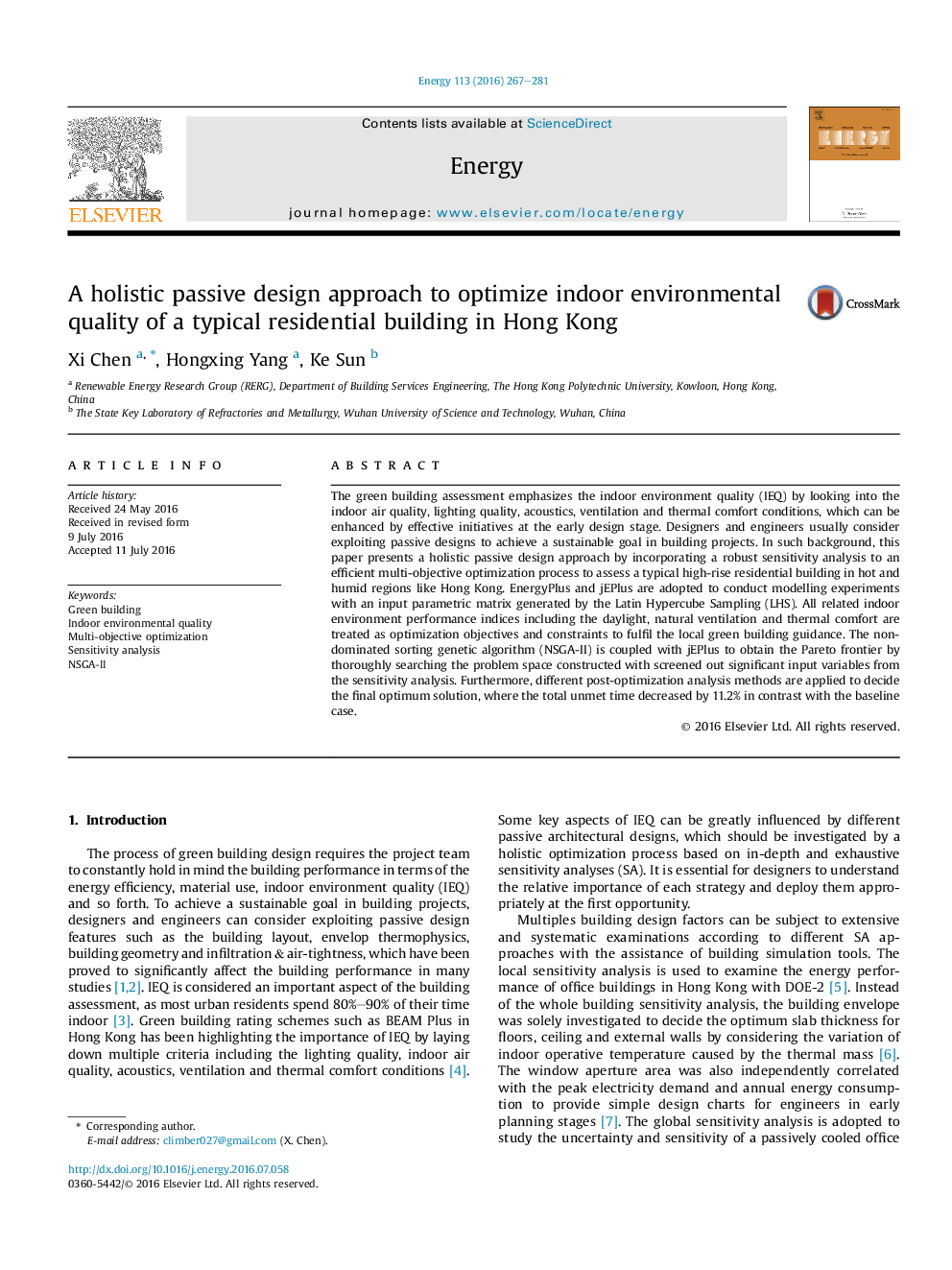| کد مقاله | کد نشریه | سال انتشار | مقاله انگلیسی | نسخه تمام متن |
|---|---|---|---|---|
| 1730739 | 1521435 | 2016 | 15 صفحه PDF | دانلود رایگان |
• A holistic optimization approach for a passively designed building is presented.
• NSGA-II algorithm is coupled with EnergyPlus to conduct the modelling experiment.
• Sensitivity analyses are conducted to screen out significant influential factors.
• Different ranking methods are applied to further process Pareto optimal solutions.
• Synergy of energy and indoor environment is considered in reaching final solutions.
The green building assessment emphasizes the indoor environment quality (IEQ) by looking into the indoor air quality, lighting quality, acoustics, ventilation and thermal comfort conditions, which can be enhanced by effective initiatives at the early design stage. Designers and engineers usually consider exploiting passive designs to achieve a sustainable goal in building projects. In such background, this paper presents a holistic passive design approach by incorporating a robust sensitivity analysis to an efficient multi-objective optimization process to assess a typical high-rise residential building in hot and humid regions like Hong Kong. EnergyPlus and jEPlus are adopted to conduct modelling experiments with an input parametric matrix generated by the Latin Hypercube Sampling (LHS). All related indoor environment performance indices including the daylight, natural ventilation and thermal comfort are treated as optimization objectives and constraints to fulfil the local green building guidance. The non-dominated sorting genetic algorithm (NSGA-II) is coupled with jEPlus to obtain the Pareto frontier by thoroughly searching the problem space constructed with screened out significant input variables from the sensitivity analysis. Furthermore, different post-optimization analysis methods are applied to decide the final optimum solution, where the total unmet time decreased by 11.2% in contrast with the baseline case.
Journal: Energy - Volume 113, 15 October 2016, Pages 267–281
